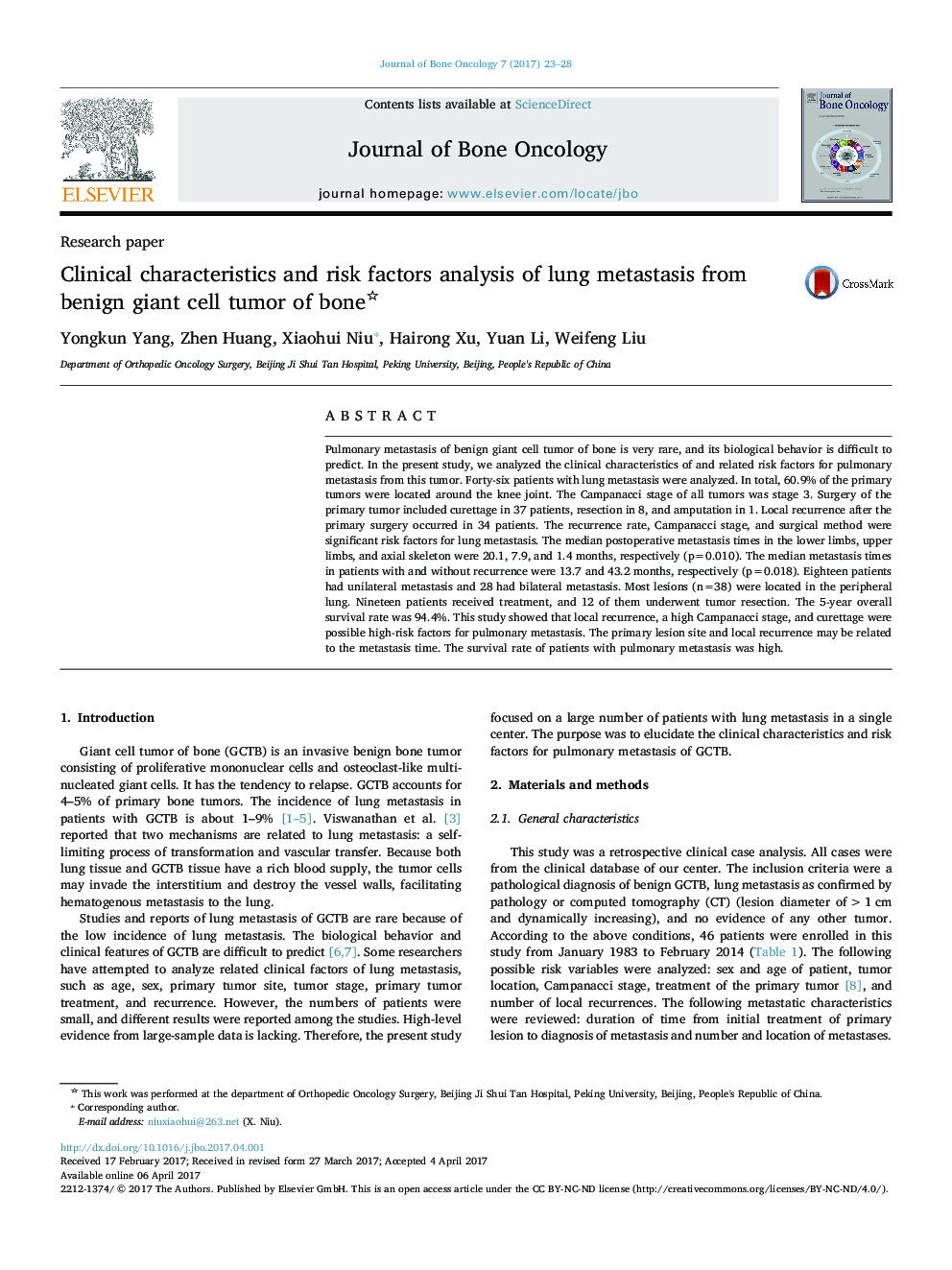| Article ID | Journal | Published Year | Pages | File Type |
|---|---|---|---|---|
| 5527674 | Journal of Bone Oncology | 2017 | 6 Pages |
Pulmonary metastasis of benign giant cell tumor of bone is very rare, and its biological behavior is difficult to predict. In the present study, we analyzed the clinical characteristics of and related risk factors for pulmonary metastasis from this tumor. Forty-six patients with lung metastasis were analyzed. In total, 60.9% of the primary tumors were located around the knee joint. The Campanacci stage of all tumors was stage 3. Surgery of the primary tumor included curettage in 37 patients, resection in 8, and amputation in 1. Local recurrence after the primary surgery occurred in 34 patients. The recurrence rate, Campanacci stage, and surgical method were significant risk factors for lung metastasis. The median postoperative metastasis times in the lower limbs, upper limbs, and axial skeleton were 20.1, 7.9, and 1.4 months, respectively (p=0.010). The median metastasis times in patients with and without recurrence were 13.7 and 43.2 months, respectively (p=0.018). Eighteen patients had unilateral metastasis and 28 had bilateral metastasis. Most lesions (n=38) were located in the peripheral lung. Nineteen patients received treatment, and 12 of them underwent tumor resection. The 5-year overall survival rate was 94.4%. This study showed that local recurrence, a high Campanacci stage, and curettage were possible high-risk factors for pulmonary metastasis. The primary lesion site and local recurrence may be related to the metastasis time. The survival rate of patients with pulmonary metastasis was high.
